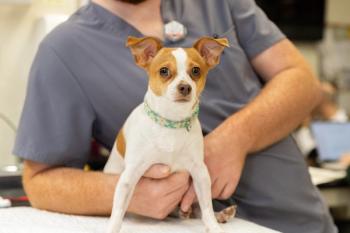
Research Update: Surgically treating cruciate ligament rupture in cats
In this retrospective study from a veterinary clinic in Regina, Saskatchewan, 17 cases of feline cranial cruciate ligament injury treated between 1997 and 2004 are described.
In this retrospective study from a veterinary clinic in Regina, Saskatchewan, 17 cases of feline cranial cruciate ligament injury treated between 1997 and 2004 are described. In one group of nine cats, traumatic injuries (usually resulting from falling) to the other stifle joint ligaments were also identified; the other group of eight cats had damage to the cranial cruciate ligament only. These eight had not experienced a known traumatic event and were mostly indoor cats.
The cats in the traumatic injury group were younger (mean age of 7.5 years) and lighter (mean weight 12.1 lb [5.5 kg]) than the cats in the atraumatic rupture group (mean age of 8.5 years; mean weight of 14.3 lb [6.5 kg]). All of the cats underwent surgical treatments such as extracapsular fabellar sutures for replacement of damaged cranial cruciate ligaments, imbrication or prosthetic reconstruction with screws and sutures for damaged collateral ligaments, or partial meniscectomy for torn menisci.
Twelve cats were available for short- or long-term follow-up (two months to six years) either by direct examination or telephone contact with the owners. Limb function was rated as near or completely normal in these patients. All of the cats with traumatic injuries developed clinical or radiographic signs of osteoarthritis.
The author concluded that although not as common as the canine lesion, degenerative cranial cruciate ligament disease does exist in older, overweight cats and may be similar to the condition seen in older, overweight, small-breed dogs. Furthermore, the author thinks the stifle joints should be surgically stabilized in these patients similar to the nonconservative approach used for traumatic stifle ligament injuries.
COMMENTARY
As the feline pet population increases, practitioners will be faced with treating more stifle joint injuries in cats. While traumatic multiligamentous injuries affecting the cruciate and collateral ligaments usually require stabilization, acute exercise-induced or chronic degenerative lesions of the cranial cruciate ligament may pose a challenge in regard to selecting treatment. Although the author acknowledges the absence of nonsurgical controls, the results of this study suggest that surgical stabilization should be pursued. It may be prudent for practitioners to recommend surgery for highly unstable joints, especially if concomitant meniscal injuries are suspected. Although controlling a cat's exercise regimen or bandaging its limb is sometimes difficult, if not impossible, some owners may prefer conservative therapy because it is financially appealing.
Harasen GLG. Feline cranial cruciate rupture: 17 cases and a review of the literature. Vet Comp Orthop Traumatol 2005;4:254-257.
The information in "Research Updates" was provided by Veterinary Medicine Editorial Advisory Board member Joseph Harari, MS, DVM, DACVS, Veterinary Surgical Specialists, 21 E. Mission Ave., Spokane, WA 99202.
Joseph Harari, MS, DVM, DACVS
Newsletter
From exam room tips to practice management insights, get trusted veterinary news delivered straight to your inbox—subscribe to dvm360.





